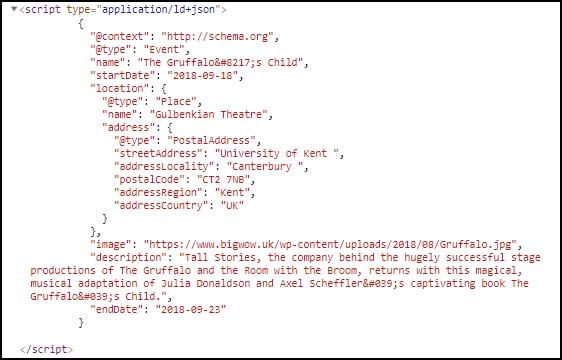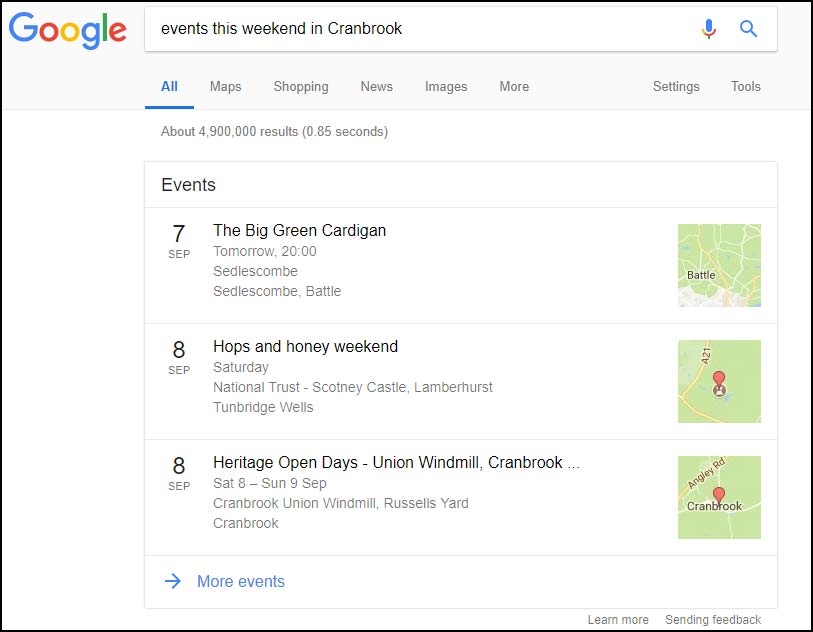Search engines do their best to understand the content on your web pages. You are able to help them by signposting the main information. Anything that we can do to help search engines to read and list the information from our websites has to be a winner.
Way back in 2001, Google, Yahoo!, Yandex and some others had a little meetup. They decided to create a standardised list of attributes and entities which became known as Schema.org.
Although it sounds complicated, Google Structured Data doesn’t have to be. Breaking it down, it is essentially a standardised format to organise and label important information. For example, on an events page you can label the dates, location and so on.
The structured data we are interested in sits in the code for your website and looks similar to the below. It is important to note that the information you are outputting in the structured data should be featured on the page for standard users to view, otherwise Google won’t feature it in the results. There are different formats for this content but this is simply an example:

The attributes and entities supported can be easily looked up on Schema.org, and if you start digging you will see hundreds of different types available to use.
Common Uses
There are a lots of ways that the structured data can be used but the two notable ones that Google implements, and that small businesses are going to benefit from, are below.
Knowledge Graph
You can use structured data to include the main information on your business which will then allow Google to include this information on what they call the Knowledge Graph.
Rich Snippets and Rich Cards
You can include information about all sorts of things and the most commonly used allow you to provide additional context for:
- Articles
- Courses
- Events
- Recipes
- Products
- Star Ratings and Product Reviews
- Videos
As mentioned above, there are lots more and it is well worth taking a look at Schema.org to see which might apply to your business.
When you add structured data for any of the above it allows your site to show up in the search results as a rich snippet or rich card:

This is money can’t buy advertising on Google as they stand out to users and are right at the top of the Search Engine Results Page (SERP).
How to Implement it
If you have absolutely no interest in getting your hands dirty with this then I suggest you contact your friendly web developer to give you a hand. However, if you have a little html knowledge and your content is relatively static, then you could manually add snippets to the pages using the Google Structured Data Markup Helper. If your website is being updated with new content regularly, then it would make sense for this structured data to be generated for you automatically, so again, give your web developer a shout.
Another tool that is invaluable when creating, testing or researching structured data is the Structured Data Testing Tool. This will allow you enter any web address and pull back all of the structured data present on the page.
Best of luck with it all and if you have any questions then please pop it in the comments below or just get in touch.




